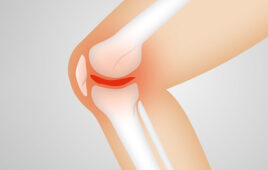You think you have trouble sticking to an exercise regimen—the astronauts aboard the International Space Station (ISS) have to spend two hours a day exercising on a bicycle, treadmill, and the Advanced Resistive Exercise Device (ARED), lest the long exposure to microgravity deteriorate their bones and muscles.
These pieces of exercise equipment work well for the (relatively) roomy environment of the ISS. But what about the long-term trips in more compact space vehicles, like the Orion Spacecraft, intended to make long journeys to both the moon and Mars?
To give astronauts the workout they need with so little space, NASA has recently developed the Miniature Exercise Device (MED-2). By way of small robotic actuators, the machine serves as an all-in-one exercise device that can provide both a motion and resistance workout in minimal space. The device is the beginning of NASA’s project to develop designs for second- and third-generation Counter Measure Systems (CMS) to combat the adverse effects of microgravity.
MED-2’s robotic actuator is part of a one degree of freedom system, and controls its load over many position and velocity conditions. The actuator will be tested under various velocities and positions in modes: including constant load, progressive loads, and non-linear loads.
After plugging MED-2 into the ISS’s AC inverter and Ethernet port, each crew member will operate the machine for 3 one-hour sessions. Data from both MED-2’s instruments and the crew member will be assessed to determine performance.
.jpg)
MED-2 flight shown with the rowing foot plate attachments (Tbar omitted in this image. Strap is not the flight strap). (Courtesy of NASA)
NASA also mentions that MED-2 has earthly applications: it could potentially offer easily adjustable resistance training for physical therapy. The use of a robotic actuator to allow resistance may permit personalized rehabilitation programs.




